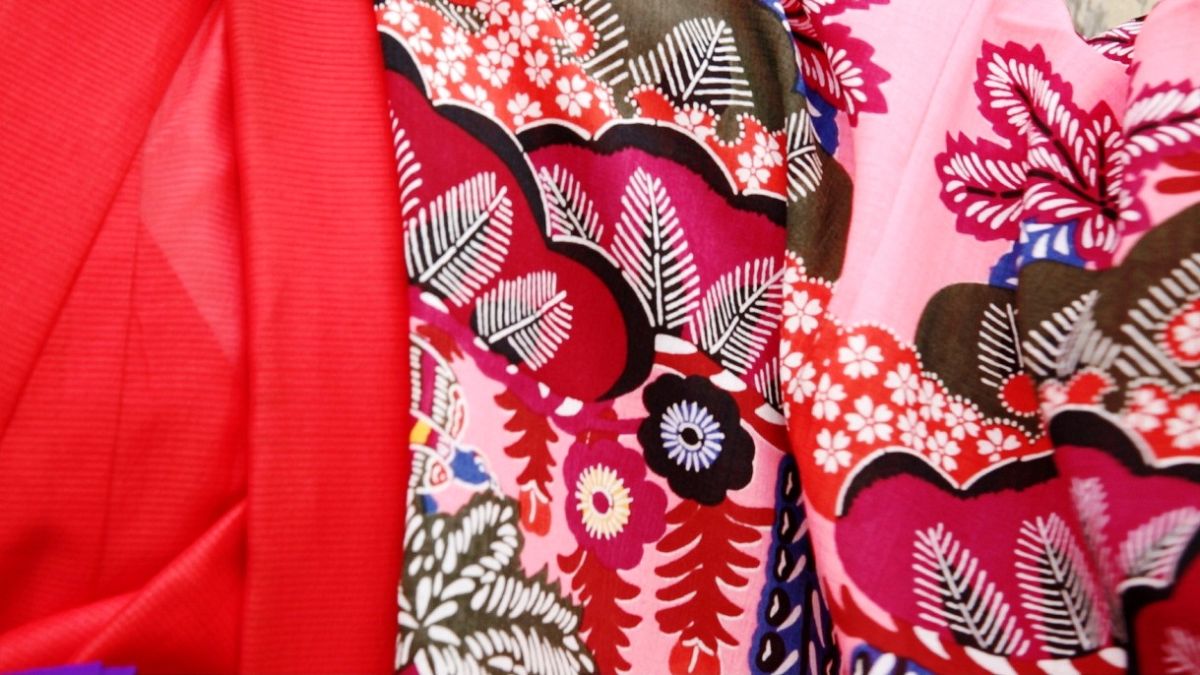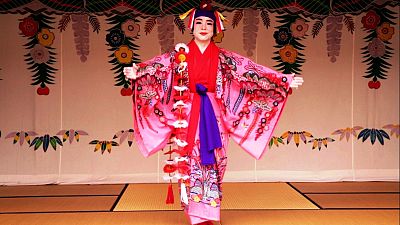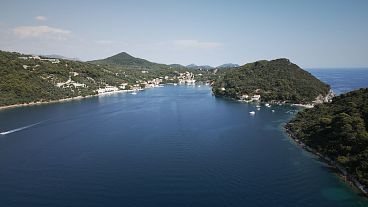Visitors to Okinawa in the south of Japan will not want to miss the various traditional dance performances that regularly take place – and it’s not just to admire the dancing. The vivid colours of this chain of islands are on display in the costumes and there are fascinating stories to be told about the techniques used.

One of the famous textiles is Bingata, which is featured in some of the dances performed at the beautiful Shuri Castle on Okinawa Island. This was the palace of the ancient Ryukyu Kingdom and Bingata was traditionally produced for those who belonged to the kingdom’s samurai class.


Bingata is cloth that has been dyed with multi-colour designs and it often features aspects of nature, especially flowers. The technique, which is specific to Okinawa, has been used for more than 500 years. Silk, linen and fabric made from plants and trees are used, including Basho-hu, which comes from the fibres of a banana tree.


It is thought that the original dyeing technique was first imported from China in the 14th century and there were other influences from other parts of Southeast Asia, India and Java. But Bingata developed as a unique textile art in Okinawa with the use of local materials and designs.

Local Bingata artists such as Morio Miyagi are aiming to keep the tradition alive, and they’re also able to bring their own inspirations and experiences to the work. Often the artists open up their studios and workshops to visitors, to explain the intricacies of their creations.

Morio told euronews: “It was the color that I was most attracted to. I was very much moved by the powerful and deep colours that are specific to the pigments of Bingata.”
“Bingata does not need many people but only one craftsman throughout the whole production process. From the designing to the final process of dyeing the clothes, I love each step.
“I’m so delighted that I tremble whenever things work out as I imagined or when it’s more than what I imagined.”

The above design on a kimono made by Morio is called ‘Flowers in the wind – cats and bougainvillea’. He told euronews: “The motif of this pattern is the flower of bougainvillea that showcases the Okinawan landscape all year round, resisting the strong wind of Okinawa. Falling petals are dancing in the wind like butterflies.
“There are also some cats playing with these petals, as if they are playing with the butterflies. The curious cat is trying to catch a petal but he just can’t make it. You will also find two laughing sparrows. I expressed a beautiful and peaceful scene, which we can see everywhere in Okinawa.”
The design of the following two images is called ‘Nankuru Papaya’.


Explaining his design, Morio said: “The papaya that I sketched here is known as “Nankurumi” (one that was not planted by someone but grew up naturally). Nankuru means ‘naturally’ and ‘mi’ means ‘grow’ in the Okinawan dialect.
“As Nankurumi is very tough, it resisted a powerful typhoon that destroyed all papayas in the field and caused serious damage all over Okinawa. When we look up at a Nankuru Papaya, which is generally very tall, we can see the blue sky at the same time.
“I expressed a delightful Okinawa morning in this pattern with the morning sunshine, fresh breeze and playful little birds. I also secretly designed something relative to Papaya. If you find what it is, you must be a true connoisseur of Okinawa! (It has something to do with “Shirishiri ki”, which means a slicer).
Another design, which we can see in the following photo, is called ‘Pompom Tinsagu’.

Morio explained: “Tinsagu means garden balsam in Okinawan dialect. There is an old Okinawan song ‘Tinsagunu hana’ (garden balsam flower), which has always been loved by the people. The song says ‘the garden balsam flower dyes the tip of my nails and the lessons from parents go down deeply into my heart’.
“I always thought about trying to dye Kimono on the theme of this song, but it’s hard to find the garden balsam these days as they tend to be weeded. Fortunately I found many garden balsams in flower in a village near ‘Kakinohana hijya’ (a famous spot for spring water) where there are old houses with red tiled roofs. So I expressed in this pattern the garden balsam flower swinging in the wind, flower buds, seeds splitting open, as well as butterflies, garden balsam leaves, red tiled roofs and the fresh stream (Kakinohana hijya).
“I also expressed with butterflies the image of a girl who played with garden balsam flowers dyeing her nails and with red tiled roofs, the image of parents who watch over their children. I designed the pattern of an uninterrupted fresh stream, hoping this song and the lesson from the song will be handed down to the next generation.”


Morio says he decided to become a Bingata craftsman when he was a child, when he first saw ‘Uchikui’ (wrapping cloth).
“After junior high school I went on to Shuri high school, the only school where students could learn Bingata. I learned there the fun of Bingata as well as the difficulties. I became interested in Bingata as a job and I decided to major in dyeing during college.
“After graduation I started working at the Shiroma Bingata studio which has continued through the ages from the Ocho era in Okinawa. This is there where I acquired advanced skills.”
Morio makes traditional Uchikui (wrapping cloth), Kimono, Obi, as well as more ordinary items. “I also make tridimensional ones. I try to make anything that can be made with Bingata. I dye using the colour in which people can feel the nature of Okinawa.”

Further links:
The Ryukyu Bingata Business Cooperative
The Naha Traditional Craft Centre
And to see more about Bingata, check out these videos on YouTube:



